In Britain, in the 1950s, sports car specials were sprouting up all over, every kind of engine stuffed into every kind of backyard-engineered chassis. Jaguar was the boss of big displacement sports cars at the time, and there were specialist builders everywhere, including John Cooper, Brian Lister, and the subject of this story, John Tojeiro.
John Tojeiro was Portuguese by birth, but an Englishman by upbringing. Through years of trial and error, he built dozens of race cars from the ground up, worked with many teams large and small, including Scotland’s famous Ecurie Ecosse, and became one of Britain’s best and most prolific race car chassis designers, building cars for such drivers as Jackie Stewart, Jim Clark, Graham Hill, Innes Ireland, Masten Gregory and Jack Brabham, among many others. A Tojeiro was raced at the 24 Hours of Le Mans every year between 1957 and 1962.
Tojeiro’s World War II service in the British Fleet Air Arm involved aircraft construction, from which he learned a great deal about managing forces and stresses. After the war, he set up shop near Cambridge.
Tojeiro’s chassis designs were fitted with all kinds of British and, later, American powertrains — MG, JAP, Lea Francis, Coventry Climax, Bristol, Jaguar, Buick and Ford, to name a few.
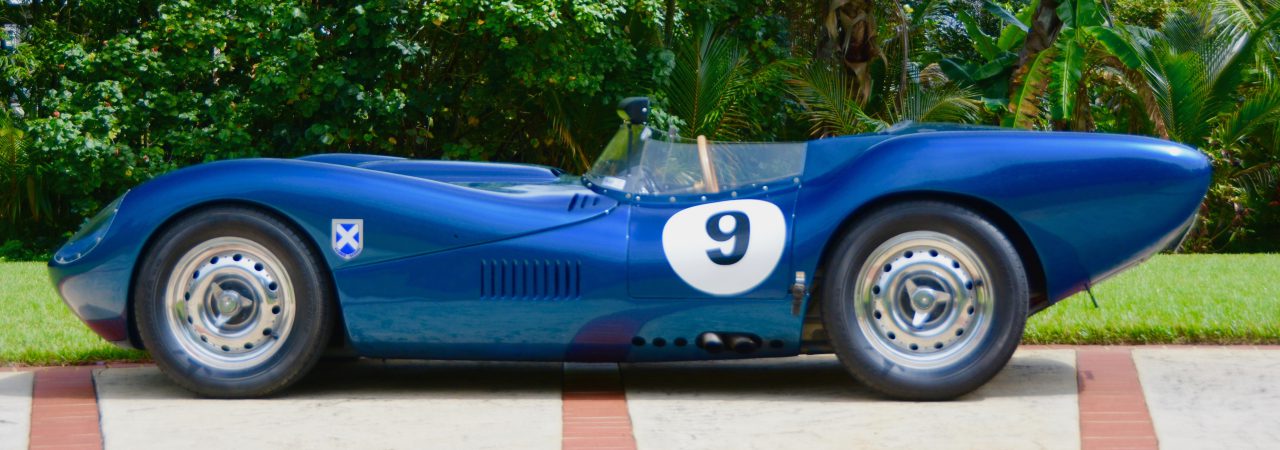
Young Tojeiro bought a burned-out MG TA, stripped and re-assembled the chassis, redesigned the suspension and chassis, and built an aluminum body for it, using cycle fenders. However, he never actually raced one of his own cars because he got so busy building chassis for other teams and people.
After that first effort, Tojeiro put together a simple “H” frame of his own design constructed of large-diameter steel tubing with a fabricated transverse leaf spring independent suspension at both ends. Tojeiro had no machine shop, so he took his project to customer (and competitor) Brian Lister, who commissioned a second car, which, like the first, had a simple aluminum body with cycle fenders.
From that beginning, John Tojeiro went on to design and build more than 50 race cars in his illustrious career, including the AC Ace Bristol, which led to the creation of Carroll Shelby’s Cobra.
Tojeiro built a few more cars, these with DeDion rear suspensions and Bristol six-cylinder engines. Then a benefactor came along and changed Tojeiro’s life.
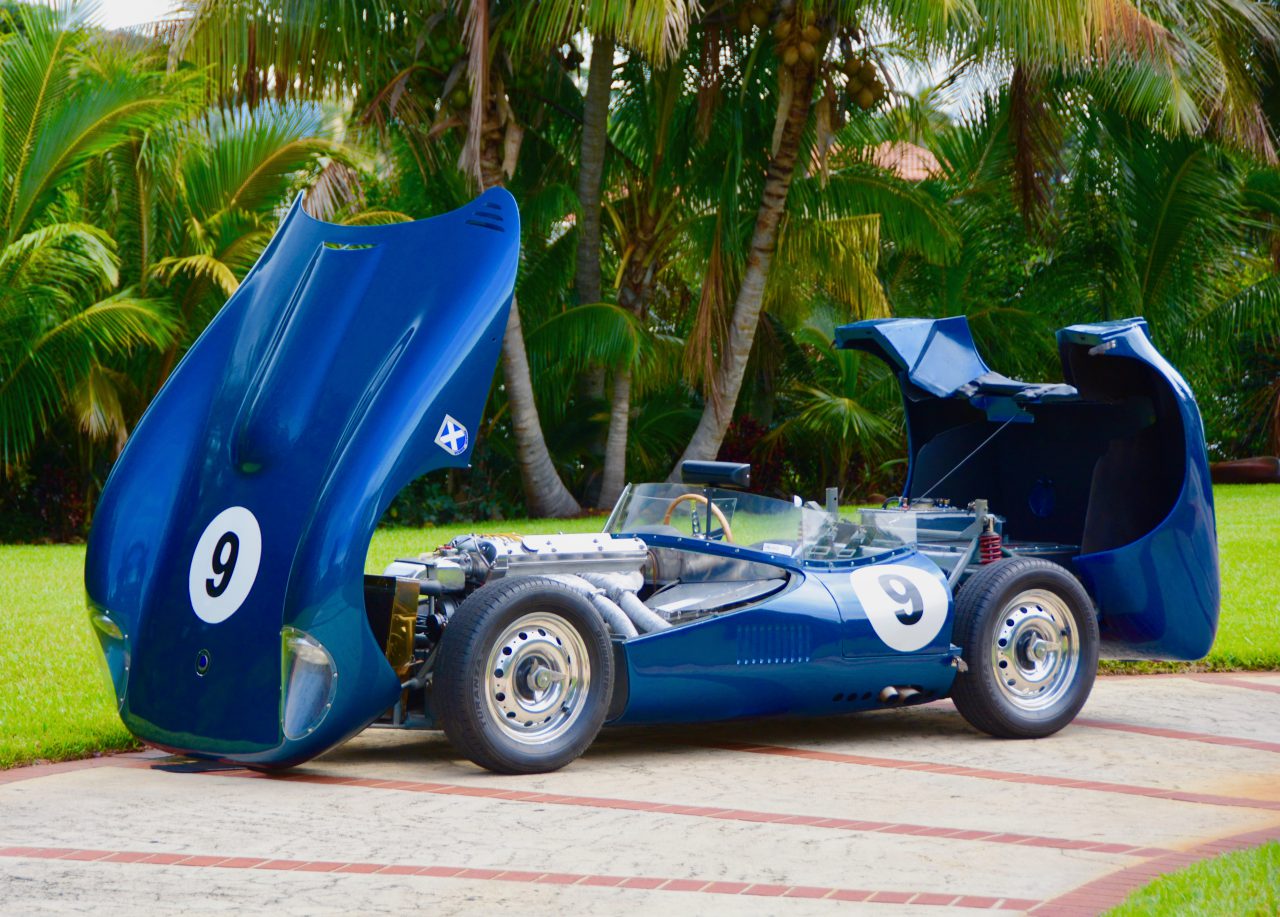
John Ogier, a farmer from Essex who raced a Jaguar XK120, was prepared to sponsor the building of a lightweight Jaguar-engined car. Tojeiro built a space frame for the Jaguar 6 using coil/over front suspension, DeDion rear suspension, a 4-speed Moss gearbox and a chassis-mounted Salisbury ZF differential with manual disc brakes fitted all round. The car, registered as 7GNO, had a very short 87-inch wheelbase and a 50-inch track. Ogier raced it for the first time at Snetterton in May of 1956, and later shared driving duties with Dick Protheroe, who won some races and set several track records.
The second Tojeiro Jaguar, built for Ogier for the 1957 season, was given a three-inch longer wheelbase, a slightly wider track, front and rear anti-roll bars, a new body shelml and wire wheels instead of the Dunlop perforated disc knock-off wheels. Jack Brabham drove the wire-wheel car early in the season and Graham Hill toward the end of the season. Ogier took the car over and crashed it at a hillclimb in Essex, escaping with minor injuries. The 1956 car went to New Zealand, where it crashed again.
Ogier, recognizing his deficiencies as a racing driver, loaned the third Tojeiro Jaguar car to David Murray at Ecurie Ecosse to race for the 1958 season. The Ecurie Ecosse (Team Scotland) team was founded in November 1951 by Edinburgh businessman Murray and mechanic Wilkie Wilkinson. Ecurie Ecosse had won the 24 Hours of Le Mans in 1956 and 1957.

The car, and many Tojeiro cars to follow, was designed by a Scottish commercial artist, Cavendish Morton. From 1957 on, he styled the Tojeiros in a most unusual way, first producing a painting of each car, which was then shown to the various body builders as the pattern from which the bodies would be built, without blueprints or plans or any wind-tunnel testing whatsoever.
David Murray had acquired the Jaguar factory’s thoroughly worn-out D-Type race cars, and at the same time, contacted both John Tojeiro and Brian Lister to build new race cars around the proven D-Type components.
Tojeiro built him a pair of space-frame Jaguar-powered cars, changing from the D-Type’s live-axle rear suspension to a DeDion independent suspension with slightly angled trailing arms instead of the equal-length parallel arms used on the D-Type. The design made the very light, very powerful Tojeiro Jaguar into an oversteering monster.
The same year, Tojeiro built a prototype space-framed Bristol-engined car for AC Cars. Another Tojeiro Jaguar was built for Ecurie Ecosse the following year. At Le Mans, it ran in fourth place after six hours but eventually its Jaguar engine succumbed to overheating.
The last series of Tojeiros came early in 1962 when David Murray commissioned Tojeiro to design and build two mid-engined coupes for Le Mans. These two cars, among the very first mid-engined coupes, had space frame chassis, 2.5-litre Coventry Climax engines, Cooper gearboxes, independent suspension by unequal wishbones and a body styled by Cavendish Morton.
Only one car was completed in time for Le Mans and it suffered gearbox problems which caused its retirement after eight hours. In 1963, the coupes were given, respectively, Ford 289 and Buick 215 engines and Jackie Stewart drove them to club-racing victories.
The car pictured here, also registered as 7GNO, is the third of the four Tojeiro Jaguars built, the one owned by John Ogier and raced by Ecurie Ecosse with drivers including Ken Sanderson, Ivor Bueb, Ron Flockhart and Innes Ireland. After its British racing career, the car was returned to John Ogier, who loaned it out to Tony Maggs, who shipped it to South Africa and raced it with some success in the Springbok series there.
The car returned to Britain in 1960 and was featured in a film titled The Green Helmet before it was sold to David Lewis, whose wife Vivienne was, unfortunately, killed in the car at Brighton in 1963. The remains of 7 GNP went to racer Paul Emery and sat untouched until restorer Gilbert Dickson took it over, restored and rebodied it. The rebuilt car years later went to a new owner, Ed Hubbard, who spirited it away from England to storage at Sebring, Florida, along with a Costin/Lister.
Enter restorer Ray Mummery, who was owed a substantial sum by Hubbard for the restoration of a McLaren. Mummery offered a half-interest in the car to racer, builder and collector Henry Grady of Miami, Florida, in 1995.
Grady, who owned a chain of import car parts stores, says, “The car was in pieces, all over the place. It wasn’t wrecked, but it was a mess, totally disassembled, a bare frame with suspension and body pieces everywhere.” Grady bought a half-interest in the car, and eventually bought out Mummery’s share.

Grady had been racing in the Southeast since 1954 with a variety of production cars, a D-Type Jaguar and an MG Midget among them, as well as six cars he built from the ground up with partner Gene Beach, cars called Begras for Beach and Grady.
Grady says he wanted to make the Tojeiro Jaguar into a viable vintage race car as well as a car that could be used for touring. So, while the exterior of the car remains true to John Tojeiro’s original design, almost everything under the skin has been changed and updated.
Inside the cockpit, there is a second seat for Grady’s car-nut wife, Rocky, a pair of padded headrests on the rear bulkhead, and a pair of sockets that mount a detachable rollover hoop. The Tojeiro dash mounts an upgraded set of gauges to monitor temperatures and pressures. The Tojeiro has been fitted with covered headlamps, brake lights and turn signals.
The engine that came in this car was an extremely rare all-alloy Jaguar 3.0-liter twin-plug 6-cylinder built to meet the 1959 FIA racing rules. Grady has pulled that engine out of the car and put it on display in his collection because there simply are no replacement parts for it.
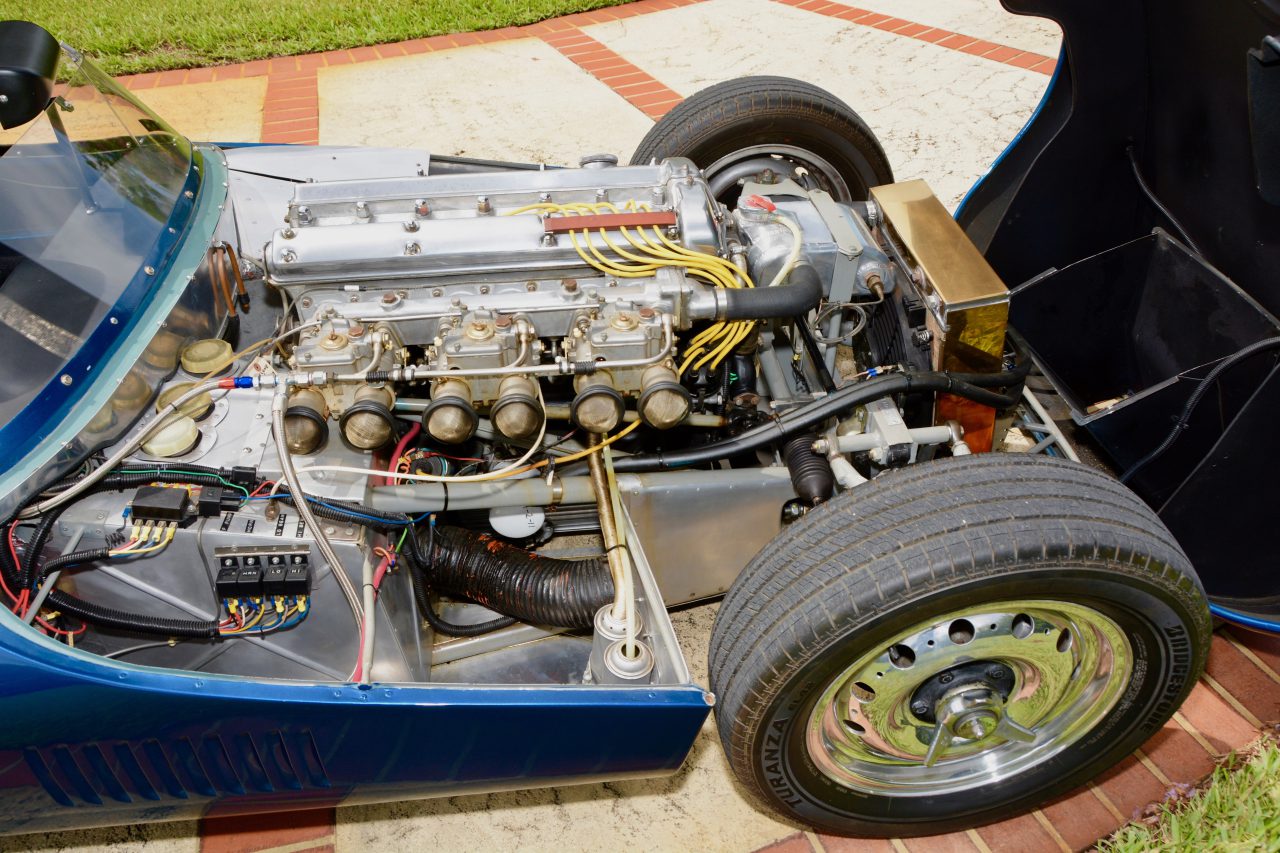
The engine that currently powers the Grady Tojeiro is a slightly warmed-over Jaguar 3.8-liter DOHC 6 that Grady says is “one of the world’s great powerplants. So flexible that you can take a D-Type that won Le Mans, put it in fourth gear and pull away from a stop.”
Grady’s engine uses new camshafts, three Weber 45 DCOE side-draft carburetors, and exhaust headers from a C-Type Jaguar, rerouted and baffled to get rid of the engine’s exhaust heat, which runs along the passenger side of the right-hand-drive car where his wife sits. Grady added a series of louvers to that side of the body to help exhaust the heat.
The fuel system uses a custom-made 20-gallon fuel cell and three electric fuel pumps to keep the big carburetors supplied. The original ZF 5-speed transmission has been replaced by a Jaguar 4.2-liter full-synchro 4-speed transmission better suited to the big engine’s torque, with a 3.31:1 rear axle ratio.
Grady took on the task of literally straightening out the DeDion rear suspension setup by taking it apart and modifying it into a copy of the Jaguar D-Type 4-link suspension which used equal-length, parallel arms rather than the unequal-length, non-parallel arms that Tojeiro designed for the car. The right side of the rear suspension has a Grady-designed pivoting mount because “I wanted to hedge my bets.” Grady designed and built a stabilizer bar for the Tojeiro coil-spring front suspension, and added an electric fan and an oil cooler to the cooling system, which still uses the original 1958 radiator.
This car is the centerpiece of Grady’s beautiful collection, which includes an EMW, a pair of AC Bristols, a Porsche 356 SC, a Ferrari 250, one of his Begras, a Triumph and three Jags. He’s 93, and still collecting.



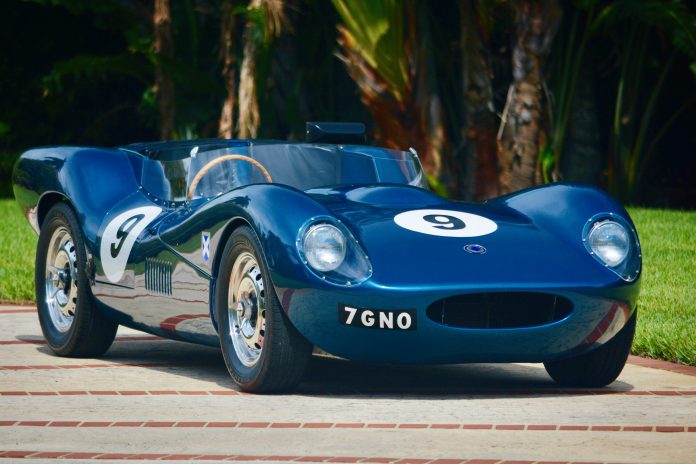
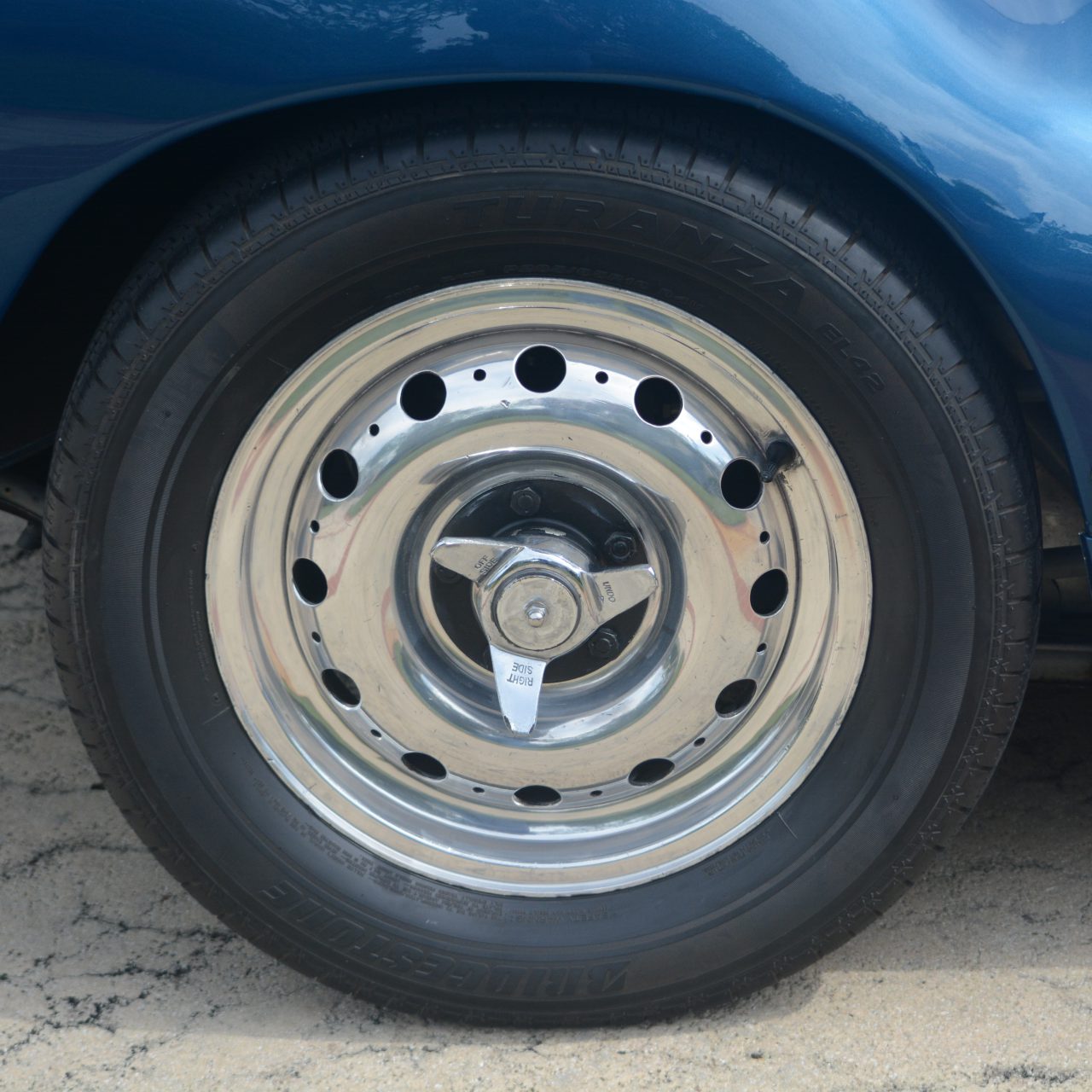
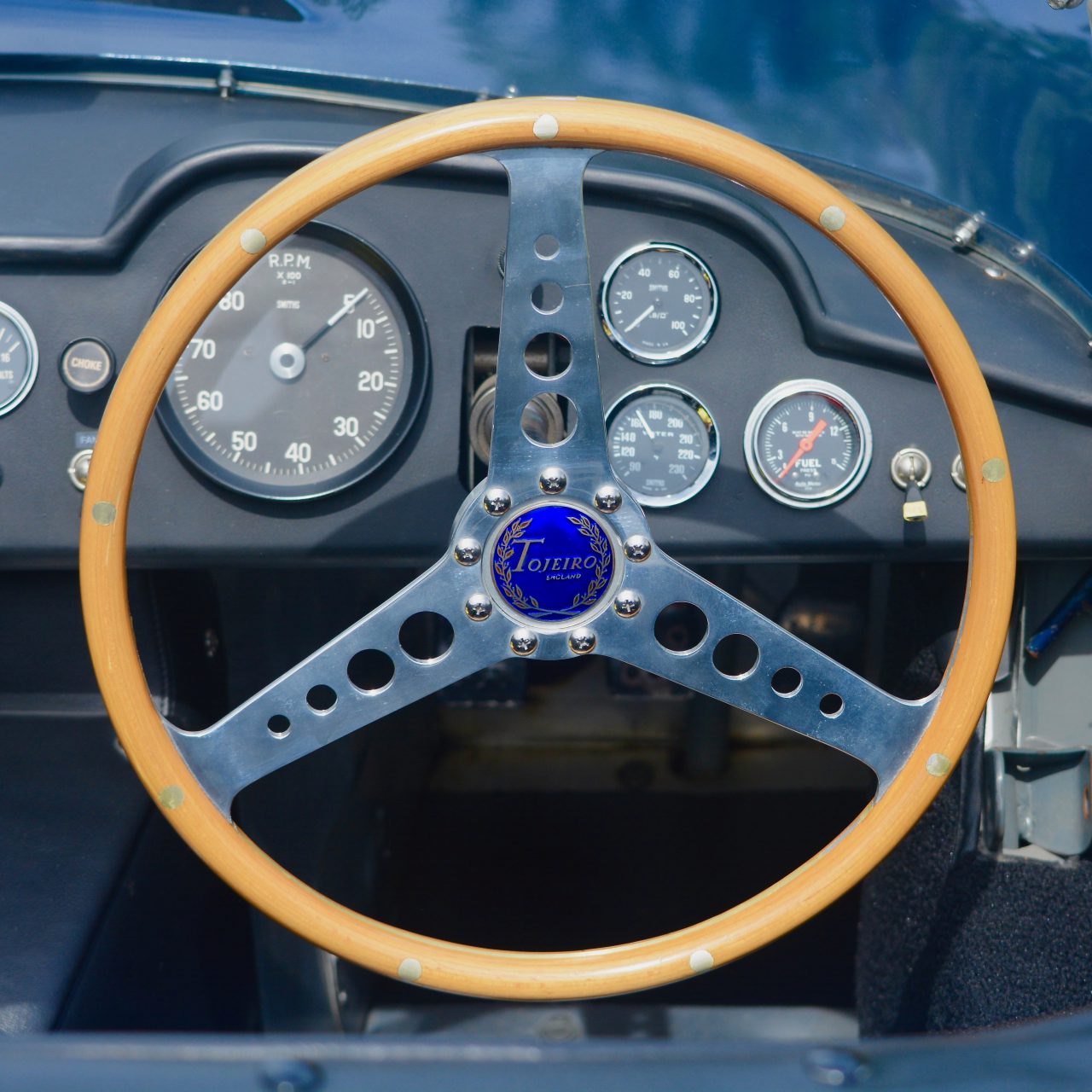



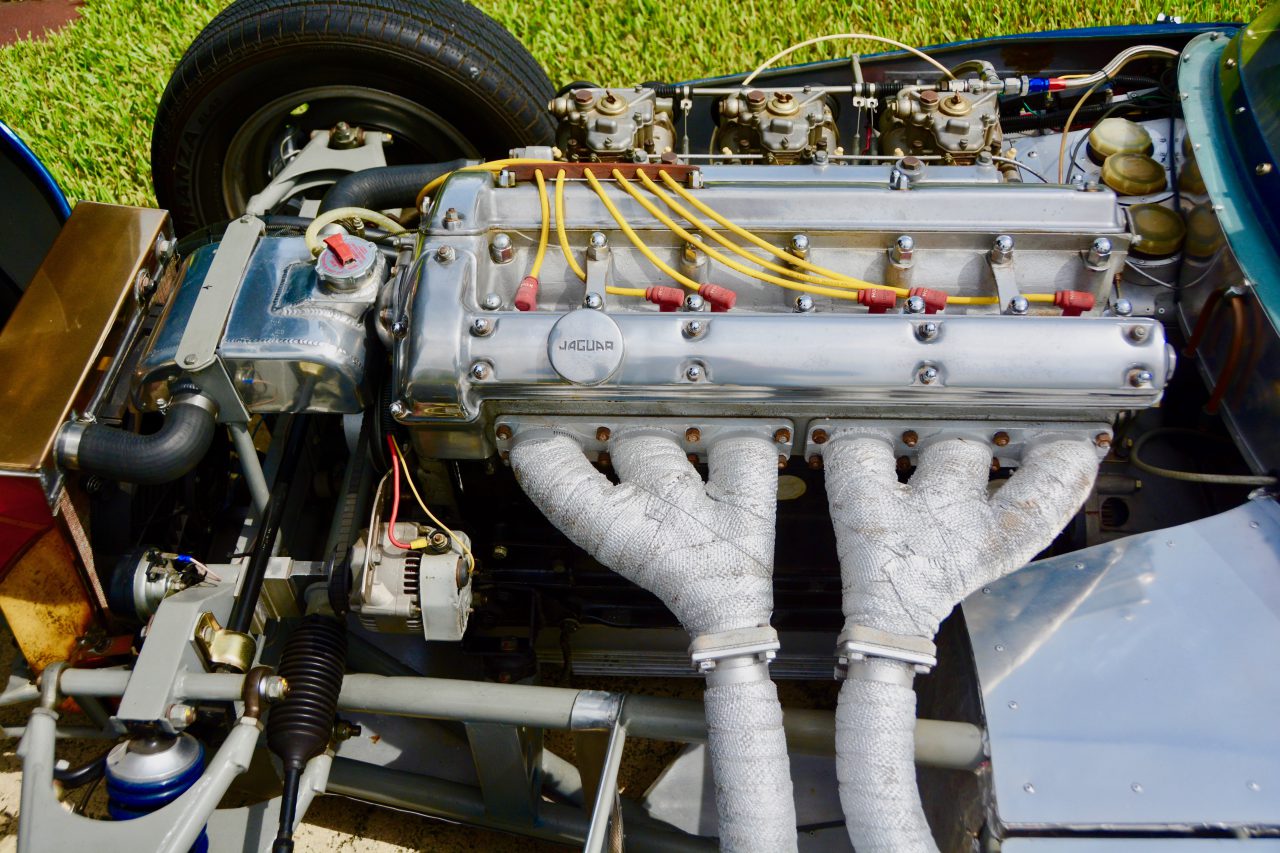


Way too cool! and I’m sure lots of fun to drive oh and $$$$
Awesome write-up! A very special motor, indeed.
very interesting and readable account of one other British racing success , what has since happened?